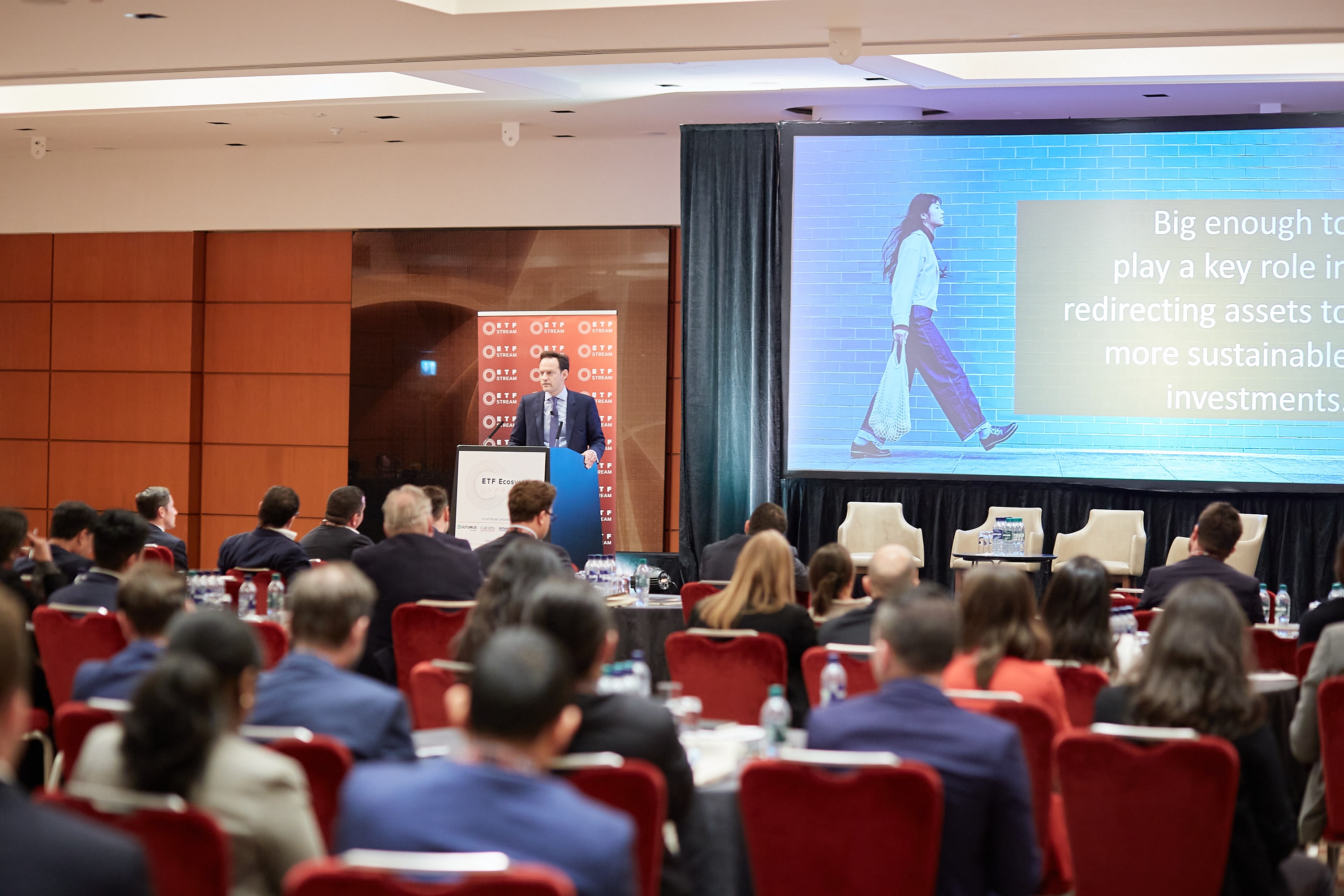The rise of passive investing and its impact on financial markets has been a growing concern in the ETF space over the past few years. The debate around what it means for the future of ETF ownership – and the dominance of the big three issuers – has intensified in recent months, leading many to speculate they are becoming too influential.
Passive funds’ stake in S&P 500 constituents has doubled in just seven years, according to data from Bloomberg Intelligence, with the average company in the S&P 500 having around 21.2% of its stock owned by passive vehicles such as ETFs at the end of March, a sign of just how much the index investing thesis has resonated with investors across the world.
It was therefore no surprise that the subject was a major topic of discussion at ETF Stream’sETF Ecosystem Unwrapped 2022. Delivering an opening keynote on whether passive investing has become too big, Arnaud Llinas, head of ETF, indexing and smart beta business line at Amundi, said the industry has not reached peak passive but added it has become too big to ignore.
“I ask myself has this industry become too big? It is certainly an industry that keeps on growing and is too big to be ignored,” he said.
“It is not too big though. When passive reaches its limit, active will respond by reducing fees, for instance. There is, however, concern of concentration of too few houses."
Many studies have been conducted on the influence of the ‘Big Three’ ETF issuers – BlackRock, Vanguard and State Street Global Advisors – and this is one of the biggest criticisms thrown at the ETF industry.
From reducing stock market efficiency by over a third to using their vast voting powers as a marketing tool, those worried about the unfolding situation are asking for more regulation in a bid to curb their influence.
Acknowledging its own role in this, BlackRock recently announced it would increase the range of funds eligible for its Voting Choice programme in the UK and expand the scheme to Canadian and Irish pooled funds, after investors with $120bn assets under management (AUM) expressed their voting preferences in just five months.
Addressing this in his keynote, Llinas said, however, it is not just about passive funds’ capability to vote, particularly on ESG products, but also passive’s ability to innovate.
“It is not only about the capacity to vote but also our own capacity to propose new investments,” he said. “We have to continue to innovate and innovation is often coming through passive before reaching active.”
In a separate fireside chat, Robin Wigglesworth, editor of FT Alphaville, assessed why passives have come to be such a dominant force in the market, noting their technological superiority and investment ability.
“I see ETFs as a new technology that has transcended its roots and gone on to conquer the financial world,” he said. “The ETF is a powerful and flexible variable to do all sorts of interesting stuff and it might be a superior investment form for especially illiquid asset classes.”
However, Wigglesworth also pointed to the dominance of a few industry players. Questioned on whether BlackRock is too big for the space, he said: “Yes, is the short answer”. However, he noted the asset manager has ‘won’ due to conducting better deals rather than “blind luck”.
“The scale nature of the index industry means the big will naturally get bigger and barring any unforeseen regulatory intervention, BlackRock and Vanguard are going to become even more titanic than they are today,” Wigglesworth said.“At some point, they will control the majority of the votes of every major company in the US and globally. This will be one of the defining battlegrounds for index funds and ETFs in the coming decade given the trend shaping the market today.”
While the growth of assets has been exponential, so too has the number of products that have been launched in recent years, an area that also concerned Wigglesworth.
He questioned whether the ETF industry was making the best out of its innovative structure or whether it was simply being used as a tool to launch “sub-par” investment strategies.
“Finance a habit of taking a positive innovation and doing it to death, I wonder if in the ETF space there is currently 'crap out the door' rather than genuinely beneficial new developments,” Wigglesworth said.
“Democratising subpar, expensive investment strategies in the guise of ETFs is dangerous and something I am worried about.”
This article first appeared in ETF Insider, ETF Stream's monthly ETF magazine for professional investors in Europe. To access the full issue, click here
Related articles







